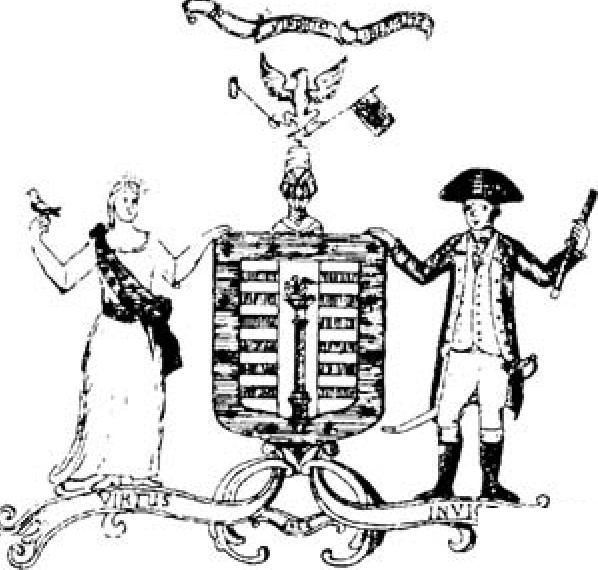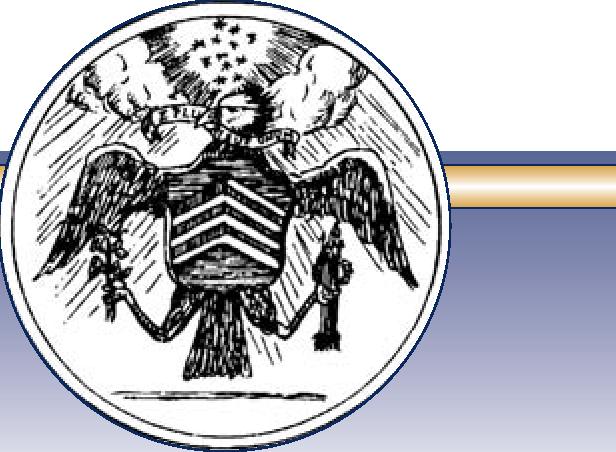
- •Предисловие
- •Содержание:
- •The United States of America
- •One nation, under God, with Liberty and Justice for all.
- •The United States
- •Us State Nicknames
- •Illinois
- •Indiana (no official nickname)
- •Vermont
- •Virginia
- •Some of the benchmark events of American history mentioned in the “Gallery of American Presidents”:
- •Монеты сша
- •White House History
- •About the Building
- •The Oval Office
- •Eisenhower Executive Office Building
- •Camp David
- •Air Force One
- •Us Government The Executive Branch
- •The President
- •The Vice President
- •Executive Office of the President
- •The Cabinet
- •Department of Agriculture
- •Department of Commerce
- •Department of Defense
- •Department of Education
- •Department of Energy
- •Department of Health and Human Services
- •Department of Homeland Security
- •Department of Housing and Urban Development
- •Department of the Interior
- •Department of Justice
- •Department of Labor
- •Department of State
- •Department of Transportation
- •Department of the Treasury
- •Department of Veterans Affairs
- •The Legislative Branch
- •The Legislative Process
- •Powers of Congress
- •Government Oversight
- •The Judicial Branch
- •The Supreme Court of the United States
- •The Judicial Process
- •The Constitution
- •Why a Constitution?
- •The Constitutional Convention
- •Ratification
- •The Bill of Rights
- •Elections & Voting
- •The great seal of the united states
- •Designing a Seal The First Committee
- •The Second Committee
- •The Third Committee
- •Charles Thomson’s Proposal
- •The Final “Device”
- •Charles Thomson’s “Remarks and Explanation,” Adopted by the Continental Congress, June 20, 1782
- •Its simplicity and lack of clutter. His design was
- •Meaning of the Seal
- •Designs of the Reverse
- •In 1782, no die has ever
- •Uses of the Seal and the Coat of Arms
- •Requests To Use the Great Seal and Coat of Arms
- •Great Seal Today
- •The Great Seal of the United States
- •The Great Seal on Display
- •Langley
- •Central intelligence agency
- •The work of a nation. The centre of intelligence. About cia
- •Today's cia
- •Mission
- •The cia Campus: a Walk Outside Headquarters
- •Nathan Hale Statue
- •Memorial Garden
- •The cia Campus: New Headquarters Building
- •The History of the Scattergood-Thorne Property
- •Cia Glossary
- •Laughing at cia?
- •The lapd, the fbi and the cia
- •Federal Bureau of Investigation
- •Laughing at fbi?
- •An fbi investigation
- •9/11 Warnings and fbi/cia Bungling
- •Late-Night Jokes About Sept. 11 Intelligence Failures
- •Foggy Bottom
- •Hitting Bottom in Foggy Bottom The State Department suffers from low morale, bottlenecks, and bureaucratic ineptitude. Do we need to kill it to save it? by matthew armstrong | september 11, 2009
- •The Watergate hotel
- •Us Department of State Headquarters
- •History
- •Duties and responsibilities
- •American entertainment
- •Hollywood
- •Hollywood glossary
- •Capitol Records
- •.. 1750 Vine Street, Hollywood, ca. / (323) 462-6252
- •On Hollywood Boulevard: from Gower Street to La Brea Avenue, and on Vine Street: from Yucca Street to Sunset Boulevard.
- •Hollywood glossary
- •"Celebrity Death Sites" a list of celebrities, whose deaths were the result of murder or suicide, including the location of their death sites
- •John Belushi's Death Site"
- •John Belushi's Death Site.
- •Silicon Valley
- •Вот, что мне особенно понравилось (для людей, изучающих английский, может показаться странным, что некоторые слова попали в разряд «чудных» с точки зрения американца).
- •Distinctive features Phonology
- •Grammatical aspect marking
- •Ebonics Translations
- •Ebonics Prayer
- •Nursery Rhymez
- •The us army
- •Army Commands (acom):
- •Army Service Component Commands (ascc):
- •Direct Reporting Units (dru):
- •Mission
- •“The Army Goes Rolling Along”
- •Пример описания боевых характеристик: Patriot
- •Entered Army Service
- •Description and Specifications
- •Manufacturer
- •Униформа армии сша
- •Знаки различия званий уорент-офицеров (Warrant Officers).
- •Знаки различия званий младших офицеров (Сompany Grade Officers).
- •Знаки различия званий старших офицеров (Field Grade Officers).
- •Знаки различия званий генералов (General Officers).
- •Наградная система армии сша
- •2. Крест за выдающуюся службу (Distinguished Service Cross).
- •8. Медаль Министерства обороны за отличную службу (Defense Superior Service Medal).
- •9. «За боевые заслуги», Орден Почетного Легиона (Legion of Merit).
- •Military Humour
- •Спецназ сша/us special forces
- •Рейнджеры / us Army Rangers
- •Спецподразделения Военно-воздушных сил сша / us Air Force Special Operations
- •Спецподразделения военно-морского флота сша, известны как "морские котики"/us Navy Seals
- •Отряд "Дельта" / Delta Force
- •Разведка Морской Пехоты сша / us Marine Force Recon
- •Воздушно-десантные войска/ us Airborn
- •Десятая Горная Дивизия/10th Mountain Division
- •Полувоенные силы Центрального Разведывательного Управления/cia Paramilitary Forces
- •Начало формы Конец формы
- •Sightseeing in america
- •Visual Landmarks New York
- •Районы Нью-Йорка
- •Управление
- •Культура
- •Планировка города
- •Транспорт
- •Сигналы опасности
- •Мосты и туннели
- •Связь в Нью-Йорке
- •Что раздражает ньюйоркцев?
- •Manhattan
- •Башня Банка Америки (Bank of America Tower)
- •Эмпайр Стейт Билдинг Why do we call New York City the Big Apple?
- •Statue of Liberty
- •The National Park Service commemorates the anniversary of the Statue of Liberty annually on October 28th. Mount rushmore
- •The grand canyon
- •Niagara Falls
- •Alcatraz
- •History
- •Military history
- •Military prison
- •Prison history Federal prison
- •Notable inmates
- •Post prison years
- •Native American occupation
- •Landmarking and development
- •Arlington National Cemetery
- •Placing of burial flag over a casket
- •A firing party
- •Сто вопросов и ответов о сша one hundred questions and answers about
- •2. What are the ingredients of a traditional American Thanksgiving dinner?
- •3. What do the terms "melting pot" and "salad bowl" mean to u.S. Society and culture?
- •Impressionists?
- •67. Which American President was the first to live in the White House?
- •Isbn 987–5–932050–42–2
- •191104, Г. Санкт-Петербург, наб. Р. Фонтанки, 32/1
Charles Thomson’s Proposal
The Congress still was not satisfied. On June 13, 1782, it presented the collected work and recommendations of the three committees to Charles Thomson, Secretary of Congress. Thomson was not an artist, but he was a practical man with the ability to get things done. He selected the best features of all the previous designs, assigning prominence to the eagle. Feeling that the new nation’s symbol should be strictly American, however, Thomson replaced Barton’s crested Imperial eagle with the native American bald eagle, wings extending downward as though in flight.
He placed in the left talon a bundle of arrows and in the right, the olive branch. Thomson’s modified crest (a device placed above the shield) was a constellation of 13 stars surrounded by clouds. The shield, borne on the eagle’s breast, was a chevron design with alternating red and white stripes.
Adopting the motto E Pluribus Unum from the first committee’s report, Thomson included it on a scroll clenched in the eagle’s beak. His was the first proposal in which the final design of the obverse can be seen.
In his design of the seal’s reverse, Thomson retained the pyramid with the Eye of Providence in a triangle at the zenith and, as products of his Latin scholarship, introduced the mottos Annuit Coeptis (He [God] has favored our undertakings) over the eye and Novus Ordo Seclorum (A new order of the ages) beneath the pyramid. He gave his rough sketches and reports to Barton, depending on him to polish the designs.
The Final “Device”
Barton portrayed the eagle with its wings displayed, but with wing tips upward, and simplified Thomson’s chevron arrangement of stripes on the shield. He arranged 13 vertical stripes, alternately white and red, below a rectangular blue “chief” (upper part of the shield). And he specified that the arrows in the eagle’s left talon should number 13.
The designs were returned to Thomson on June 19, 1782. He made a few alterations and overnight produced the “blazon” (written description) with accompanying “Remarks and Explanation” and presented them to the Continental Congress on June 20. The Congress acted the same day to adopt the report, which did not contain a drawing of either design.
Thus, nearly 6 years after establishment of the first committee, Charles Thomson and William Barton “brought in a device.” The Great Seal of the United States was unique—simple and uncluttered, yet bold—the composite product of many minds.

Charles Thomson’s “Remarks and Explanation,” Adopted by the Continental Congress, June 20, 1782
“The Escutcheon is composed of the chief [upper part of shield] & pale [perpendicular band], the two most honorable ordinaries [figures of heraldry]. The Pieces, paly [alternating pales], represent the several states all joined in one solid compact entire, supporting a Chief, which unites the whole & represents Congress. The Motto alludes to this union. The pales in the arms are kept closely united by the Chief and the Chief depends on that union & the strength resulting from it for its support, to denote the Confederacy of the United States of America & the preservation of their union through Congress.
“The colours of the pales are those used in the flag of the United States of America; White signifies purity and innocence, Red, hardiness & valour, and Blue, the colour of the Chief signifies vigilance, perseverance & justice. The Olive branch and arrows denote the power of peace & war which is exclusively vested in Congress. The Constellation denotes a new State taking its place and rank among other sovereign powers. The Escutcheon is born on the breast of an American Eagle without any other supporters [figures represented as holding up the shield] to denote that the United States of America ought to rely on their own Virtue.
“Reverse. The pyramid signifies Strength and Duration: The Eye over it & the Motto allude to the many signal interpositions of providence in favour of the American cause. The date underneath is that of the Declaration of Independence and the words under it signify the beginning of the New American Era, which commences from that date.”
words under it signify the beginning of the New American Era, which commences from that

Thomson united earlier suggestions, gave
them fresh and novel arrangement, pleasing in
